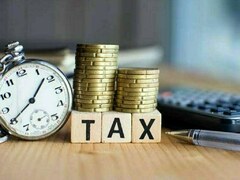LIBOR has gone up; thus a case for reduction of this margin suitably. Second solution is increase in the repayment period.
In the power sector, debt servicing is cash based and not cost based which brings the servicing load forward. An increase in the repayment period combined with or without leasing type constant total payment can bring down the financial load.
Reducing rising electricity tariff?-I
Currently, project debt is paid in 10-12 years after servicing of which servicing is significantly increased to equity return only. If loan period is extended to 20 years, financial servicing load would be pushed forward. In case of up-front tariff projects, where investor has borrowed the loan, this would translate into equalization of tariff over 20 years. A reduction in financial servicing load would mean a reduction in foreign exchange requirement as well.
Debt/equity swap

The debt which is in the form of energy tariff payables or loan is to be paid in foreign currency, USD mostly. In case of China, there may be possibility of payment in RYB. How do you buy or procure this foreign currency? Debt-Equity swap can be a useful approach. Where, the project is owned by local equity holders or government, the lender can be paid in terms of equivalent share value; the latter though is not easy to determine and can be contentious.
The project may not be the same of which there are pending overdues. It can be a different one. For example, for payables of coal power plant, LNG power plants or Discos can be sold in part or full. There can be other projects or assets which require to be paid in local currency.
There can be many intermediary financing arrangements of debt swap schemes. Bonds may be issued to cover the sales price or value of the privatisation assets. There can be privatization or swap bonds which can be traded in the market.

Debt for export swaps
This is akin to barter trade system or PL-480 of yester years. Foreign currency payments can be tied to exports. Export projects can be designed for such purposes, e.g., agricultural exports to China. Debt to climate change projects swaps. It has been done and is being done.
Pakistan can finance climate change projects in local currency which is paid for in foreign currency by project buyers or donors. This can be applicable to any sector and is not fixed to power sector alone.
Will debtors agree to swaps and debt restructuring?
These are not unknowns in the financing world. There has to be sympathy and long-term economic and political interest. In Chinese and CPEC (China Pakistan Economic Corridor) we have both. We have to, however, come up with feasible solutions and not just sit on the overdue payments asking for extensions incessantly. The CPEC can be used for increasing local production and exports. The proceeds can finance the payment dues of various sectors.
China today is as sophisticated as the IMF and World Bank, and is expanding its activities in financial domains. China would certainly accept reasonable proposals, concessions and adjustments.
They may be lacking the kind of spoon-feeding know-how the IFIs like World Bank may be used to. Let us do our home-work adequately.
To conclude, what we have proposed in the foregoing is not extra-ordinary. It has been tried elsewhere in debt related cases. Even a partial success in the foregoing may give results. It is the only short- term solution possible. In the medium term, there are solutions that we have indicated in the beginning; steps should be taken in that direction as well.
Copyright Business Recorder, 2023
The writer is former Member Energy, Planning Commission and author of several books on the energy sector
























Comments
Comments are closed.